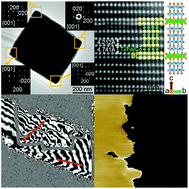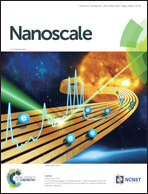Intrinsic multiferroics in an individual single-crystalline Bi5Fe0.9Co0.1Ti3O15 nanoplate†
Abstract
In recent years, much attention has been paid to layer-structured Bi4Bim−3Fem−3−xMxTi3O3m+3 (BFMTO, M = Co, Mn) compounds due to their potential as high temperature single phase multiferroic materials. However, BFMTO single crystals have been rarely reported in the past, though they are better candidates for studying the corresponding intrinsic multiferroics as well as the platform for making future devices, due to their structural complexity and difficulties in fabrication. In this article, Bi5Fe0.9Co0.1Ti3O15 single-crystalline nanoplates were synthesized by the hydrothermal method. The ferromagnetic domain structure of the nanoplate was investigated by electron holography. Denser phase contours were observed and the closed magnetic flux lines indicated a significant magnetic interaction between the neighboring nanoplates, which proved the ferromagnetic nature of the sample. Furthermore, M–H loops of the sample were also measured, in which the ferromagnetic Curie temperature reached ∼730.2 K. Besides, ferroelectric domains were also detected by using a piezoresponse force microscope. All the above-mentioned results indicate the first verification of the room temperature (RT) multiferroic behaviour in such single crystals, which will be useful for both future devices and understanding the underlining physics.



 Please wait while we load your content...
Please wait while we load your content...